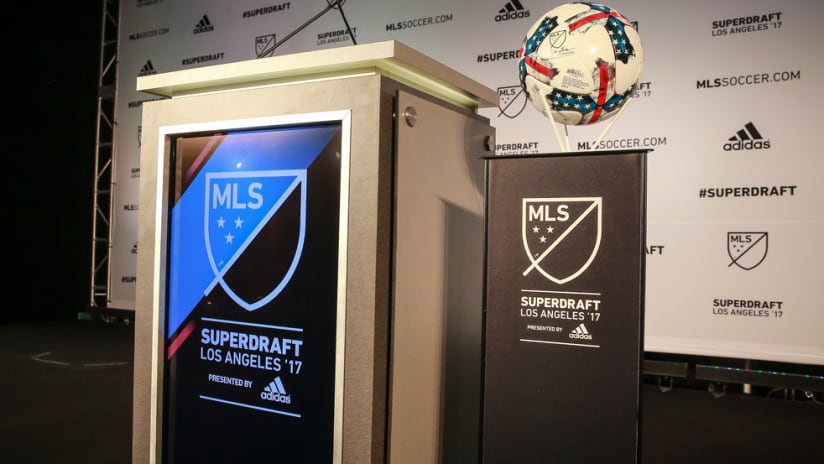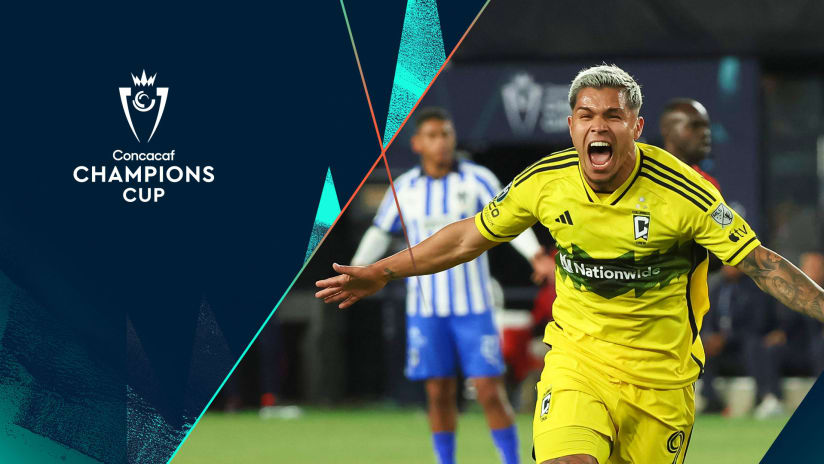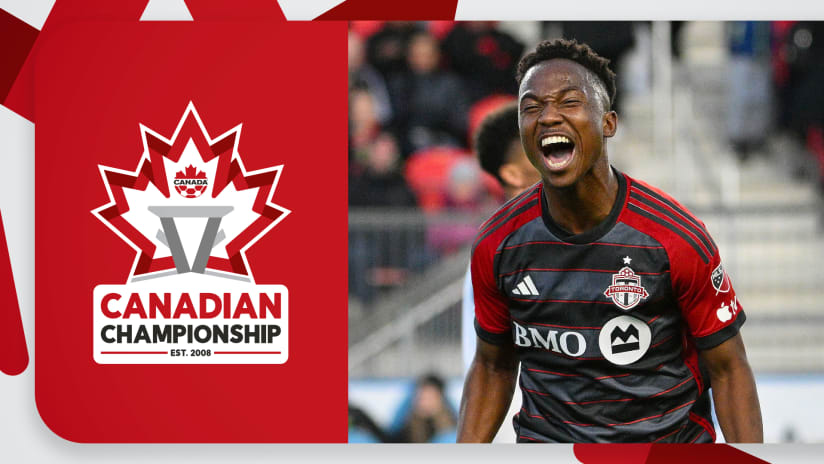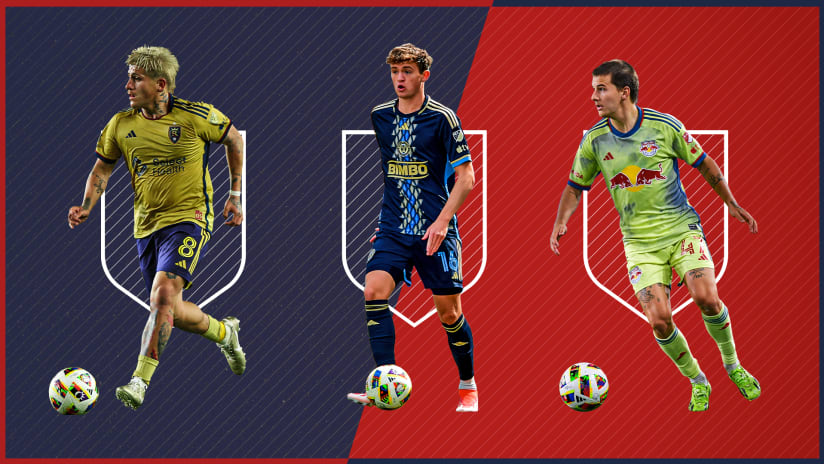LOS ANGELES — The din in the building rose to a clamor as Commissioner Don Garber took his spot behind the dais with a sheet of paper in his right hand.
After months of speculation, we finally knew. The first man off the board in the 2017 MLS SuperDraft was electric UCLA forward Abu Danladi. After all the conjecture, Minnesota United hung onto its pick and went with the best player on its draft board. Needless to say, it was the start of a tremendous afternoon for the expansion club.
And for the rest of the league, it was the nitrous oxide boost to a day a few offices are celebrating and a few others would just as soon forget.
The draft is a notoriously difficult place to find talent, not because the talent isn’t there but because talent evaluation when it comes to college soccer is no easy thing. With that in mind, I’ve taken the time to rate each of the 22 MLS clubs’ afternoons over the first two rounds of the draft. The latter two will take place on Tuesday, but Friday offered a glimpse into the mind of each club’s plan for the future.
Here’s how I graded them:
Atlanta United FC
Players: D Miles Robinson (No. 2), M Julian Gressel (No. 8)
Grade: A
If Atlanta United didn’t win the day, the club certainly came close in its first-ever draft. Picking twice in the first 10 was perhaps more deceptively difficult than it looked, and Atlanta hit on both of its picks. Miles Robinson was far and away the best defensive prospect in this draft, and technical director Carlos Bocanegra, himself a former center back, had high praise for his soccer IQ. Julian Gressel, meanwhile, is a pro-ready midfielder who should be competing for time right away. Tremendous day from a front office that clearly gets it.
Chicago Fire
Players: M Daniel Johnson (No. 11), GK Stefan Cleveland (No. 26), F Guillermo Delgado (No. 27)
Grade: B+
The Fire had two picks in the first round, but they traded out of No. 3 for a king’s ransom of $250,000 in allocation cash. On top of that, they managed to snap up Johnson with their other pick, one of the only true left wingers with bona fide pro potential in the entire draft pool. Cleveland is a bit of a risk at No. 26, but Delgado was a steal a pick later. The Fire ultimately only used $75,000 of that allocation bundle to trade back up to get to Cleveland and Delgado, both of whom could turn out to be even better than advertised.
Colorado Rapids
Players: M Sam Hamilton (No. 15), D Liam Callahan (No. 24)
Grade: C
Hamilton is a hometown kid who had a productive, workmanlike four years at a Denver program that just polished a second consecutive unbeaten regular season. But there are still questions about Hamilton’s best use (is he a No. 8 or a No. 6 at the next level?) and with midfielders like Jacori Hayes, Kwame Awuah and Dominic Oduro still on the board, Hamilton was the definition of a reach at No. 15. The Rapids tend to reach for at least one defender on the first day of the draft, and they did that again on Friday. The question is whether they reached on the right one. Callahan, meanwhile, played left wingback at Syracuse as a sort of hybrid. It was a weak position anyway, and Callahan wasn’t its best player available.
Columbus Crew SC
Players: D Lalas Abubakar (No. 5), F Niko Hansen (No. 9)
Grade: B+
A couple of months ago Abubakar wasn’t on many pro radars as a serious first round candidate, but his senior campaign at Dayton mixed with a roaring Player Combine changed all that. Abubakar slyly might be the best center back in the draft in terms of projecting immediate impact. Robinson is probably still a year or two away, but Abubakar could slip into an XI right now and most likely acquit himself admirably. Four picks later, Columbus snapped up one of the only true wide players in the draft. Hansen could play up top, as he did at New Mexico, or he could slot in as a sort of Ethan Finlay understudy. Either way, it was a tremendously smart pick.
D.C. United
Players: D Chris Odoi-Atsem (No. 12), GK Eric Klenofsky (No. 34), D Jo-Vetle Rimstad (No. 43)
Grade: B+
D.C. United clearly targeted its defensive unit in the draft, and they hammered away at it through their first three draft picks. There’s a pretty convincing argument out there that Odoi-Atsem, who had a great year at Maryland in 2016, is the single best right back in the draft. He’s probably the most athletic, anyway, and he should immediately compete for time. The real value might’ve been in Klenofsky. D.C. United doesn’t need a starting 'keeper, but it does need an understudy, and it managed to poach arguably the best netminder in the draft (and at very worst the No. 2) at No. 34. Rimstad is more of a project and could struggle to make many 18-man rosters this year.
FC Dallas
Players: M Jacori Hayes (No. 18), D Walker Hume (No. 37), F Adonijah Reid (No. 40)
Grade: B+
Looking for this year’s Cristian Roldan? The player who fell so far that a few jaws had to be politely collected from the floor? That could well be Hayes. The Wake Forest midfielder seemed like a surefire Top 10 pick a month ago, but questions about his best position seemed to push him down the list. FC Dallas is the ample beneficiary. Hayes is a big time talent and is probably a better prospect than half the players taken above him. Hume might struggle to keep up with FCD’s pace, but even at 6-foot-5 he can surprise with his quicks. Reid, a 17-year-old live-wire forward out of the Generation adidas Canada program, is a beguiling pick and could turn into something special (or nothing at all).
Houston Dynamo
Players: M Joseph Holland (No. 10), GK Jake McGuire (No. 30), D Danilo Radjen (No. 36)
Grade: D
The Dynamo didn’t try to hide the fact that they were shopping the No. 4 pick, so when they swapped with Portland at No. 10 it wasn’t much of a surprise. But they didn’t do much with the window. Joseph Holland, who had a standout career at Hofstra, wasn’t considered a first round midfielder by many. If Houston wanted a central midfielder who could run the show, they should’ve stuck at No. 4 and taken Jackson Yueill. Taking McGuire with Klenofsky still on the board was questionable, and there are doubts around center back Radjen, who probably wasn’t even in the Top 5 at the position. Not much to note about this haul.
LA Galaxy
Players: N/A
Grade: N/A
I want to make sure to spotlight the Galaxy here as a reminder that not everyone approaches draft day in the same way. About an hour or so before the draft started, the Galaxy, who had no first or second round picks to start the day and didn’t trade in, announced they’d signed highly regarded center back prospect Hugo Arellano to a Homegrown deal just hours before trading away veteran A.J. DeLaGarza to Houston. Arellano, 18, captained the Under-17 U.S. Men’s National Team and is probably a Top 10-level talent in terms of draft picks. So it goes in LA, which always does draft day a bit differently.
Minnesota United
Players: F Abu Danladi (No. 1), GK Alec Ferrell (No. 23), D Thomas de Villardi (No. 42)
Grade: A-
Minnesota United did the right thing at No. 1, which was a harder thing than it seemed. Whether they were popping smoke with the Ebobisse rumors, Danladi was the better of the two and probably has the higher ceiling. The obvious choice can often be the hardest to make, but not at Minnesota’s table on Friday. Minnesota United also managed to snap up the best 'keeper in the draft with Ferrell, whom they managed to grab in the second round. The only thing stopping this group from being a straight A was de Villardi, who has the look of a camp body.
Montreal Impact
Players: F Nick DePuy (No. 19), M Shamit Shome (No. 41)
Grade: B-
There was nothing sexy about the Impact’s first day. They didn’t execute any trades and stayed close to home with Shamit Shome. But it was stealthily good. DePuy might be the best out-and-out No. 9 in the draft pool in terms of bodying up defenders and working with his back to goal. He also fits Montreal’s system as a Drogba type who bedevils central defenders. Shome might be a steal and might be a bust. It’s hard to tell with the Generation adidas Canada signing. As far as central midfielders go, he might be one of the tidier in the draft, and his experience north of the border (and the fact he knows some French) should help him acclimate.
New England Revolution
Players: F Brian Wright (No. 20), M Napo Matsoso (No. 31)
Grade: B
New England didn’t win the day, but I really like what the Revolution did here. They essentially got two system guys with high value in regard to how New England likes to play. I’ve compared Wright to Chris Wondolowski before, which should hearten a New England side that wants a bit more consistency out of the forward position. And Matsoso is an absolutely perfect attacking player for Jay Heaps’ system. He’s small, has startling quicks and prefers to keep it on the ground. Matsoso may well translate out wide, which would make the Revs that much more multi-faceted off the bench.
NYCFC
Players: F Jonathan Lewis (No. 3), D Kwame Awuah (No. 16), M Jalen Brown (No. 38)
Grade: B
Give it to NYCFC; when the front office knows what it wants, it wastes little time bringing the thing about. In an otherwise staid draft, NYCFC traded up twice and parted with a total of $325,000 in allocation money for Lewis and Awuah. That’s a questionable amount of money to part with during a single day of the draft. Lewis is quality, and taking him over Ebobisse means they valued width over an out-and-out striker (Lewis is more versatile). That’s fine, but Lewis was still probably the fourth-best Generation adidas player. Awuah is a quality "Patrick Vieira" player who could slot in at left back. Brown is a project.
New York Red Bulls
Players: F Zeiko Lewis (No. 17), F Ethan Kutler (No. 39)
Grade: B-
When Lewis fell to the Red Bulls at No. 17, he offered a stirring speech about proving the teams that passed on him wrong. The club will like that personality, and they’ll like Lewis’ game even more. Like a number of diminutive attackers, the Red Bulls will have to find a permanent home for Lewis, whose projection is murky. He wasn’t the best of his ilk available, but he was value added at No. 17. Kutler, meanwhile, was a reach at No. 39 and was probably taken due to the organization’s familiarity level.
Orlando City
Players: N/A
Grade: N/A
Quiet afternoon for Orlando City, who had no picks on Friday.
Philadelphia Union
Players: F Marcus Epps (No. 25), D Aaron Jones (No. 33)
Grade: C+
The Union really could’ve used a center back this draft, and without a first rounder that was always going to depend on how the draft shook out above them. And there were options available at No. 25. It isn’t that Marcus Epps was a bad pick (he played in a comfortable pro-ready system Dom Dwyer was reared in at South Florida), but over options like Francis de Vries or Walker Hume? I don’t see it. That said, the Jones pick was a tidy piece of business. A right back who likes to push with numbers, Jones should be competing for time with Keegan Rosenberry at a position of continual need in MLS.
Portland Timbers
Players: F Jeremy Ebobisse (No. 4), D Michael Amick (No. 32)
Grade: A-
There was nothing low-key about the quality of Portland’s draft. The Timbers made a stunning deal with Houston on the trade from No. 10 to No. 4 (just think of it as a value-conscious $100,000 transfer fee, essentially), and they managed to get a forward in Ebobisse who might’ve gone No. 1 in a different year. Amick is a risk, but there’s a high-reward quotient attached to it. The UCLA defender slipped almost entirely because of his injury history, but he’s a US youth national team-caliber center back who could be the steal of the second round.
Real Salt Lake
Players: D Reagan Dunk (No. 13), D Justin Schmidt (No. 35)
Grade: B
I’m on record as saying Reagan Dunk is the best fullback prospect in the draft. RSL didn’t waste any time and took him off the board, prompting a run of two successive right backs behind him. Whether those clubs were also looking at Dunk and wanted to shore up the position or not, it was a smart move at a thin position. Schmidt might’ve been a bit more of a reach at No. 35, but the Washington defender is well-versed in a couple different defensive systems. Whatever he lacks in agility he makes up for in strength. He should have a chance to make the roster.
San Jose Earthquakes
Players: M Jackson Yueill (No. 6), M Lindo Mfeka (No. 28)
Grade: B+
The Jesse Fioranelli era has indeed begun. Whether or not San Jose would’ve drafted a player like Yueill before Fioranelli, the new GM reportedly liked Yueill and clearly had a hand in his drafting. That’s good news, of course, because Yueill was probably the best out-and-out midfielder in the entire draft. If he gets a chance, Yueill's drafting might’ve marked a turning point in the club’s talent assessment history. Mfeka is a quick-footed attacker who can dive between defenders and create havoc. A surprisingly attacking-oriented draft, and in a good way.
Seattle Sounders
Players: D Brian Nana-Sinkam (No. 22), M Dominic Oduro (No. 44)
Grade: B-
The Sounders were readying their pick at No. 16 when NYCFC appeared and offered $75,000 in allocation cash for the spot. The Sounders obliged, moving out of their top pick to their two natural ones. I was high on Nana-Sinkam, who’s a quality, unspectacular center back with plus instincts, but lacking size. The Oduro pick is doubly interesting and harder to judge. He’s an internationally experienced holding midfielder in a draft with little quality at that position. Oduro has high boom-bust potential, which is of course good and bad.
Sporting Kansas City
Players: D Colton Storm (No. 14)
Grade: C+
Quiet day on the whole for Sporting KC, which went safe with its one pick in the first round. Storm spent the majority of the latter portion of his career at North Carolina playing center back in a three-man back line, meaning his switch to right back isn’t perhaps as dramatic as it seems. But Sporting KC doesn’t exactly need right backs, and unless Peter Vermes plans on swapping Storm to left back (which might not be a great idea), Storm will have tough sledding.
Toronto FC
Players: D Brandon Aubrey (No. 21)
Grade: B
Toronto FC entered the day with three picks and left with one and $75,000 in allocation cash. That’d be a pretty poor day on the whole if that one pick wasn’t Aubrey. The Player Combine is often an over-inflated mechanism that puts an intense amount of scrutiny on only three (or fewer) performances. Aubrey didn’t have a great Combine and slipped, and TFC wisely arrested his slide with the penultimate pick of the first round. Aubrey was considered by many as the second-best center back in the draft pool, and he should fit the three center back system well.
Vancouver Whitecaps
Players: D Jakob Nerwinski (No. 7), D Francis de Vries (No. 29)
Grade: C+
Not a whole lot of positional diversity from the Whitecaps here. Nerwinski was a late riser up the draft board after a quality year at UConn, but he isn’t exactly the most exciting pick at No. 7 with Odoi-Atsem, Dunk, Storm, Nana-Sinkam and Aubrey still on the board there. Vancouver might try to flex him outside, which would give the pick more worth, but it wasn’t exactly an ambitious stab. As for de Vries, I’m a proponent of the pick. I thought the rangy New Zealand center back fell mightily in the draft and he was one of the quality pick-ups of the second round. To boot, he might have the best set-piece delivery we’ve seen out of a defender in recent memory.














